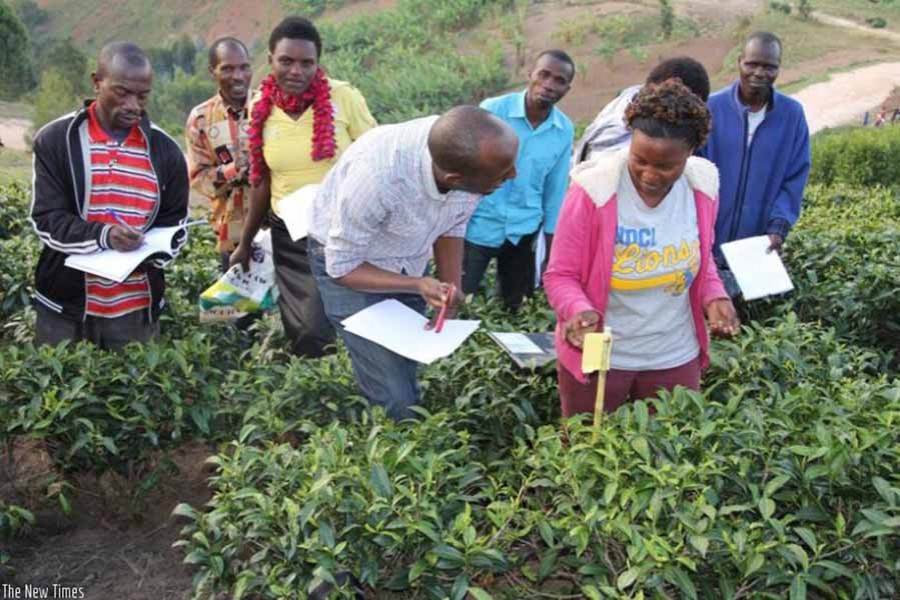An article compares livestock transfer with and without training and thus highlights the importance of skill-training in the augmentation of household income. The research has been done by Jonathan Argent, Britta Augsburg, Imran Rasul on "Livestock Asset Transfers With and Without Training: Evidence from Rwanda". Rwanda is a state in central and east Africa bordered by Uganda, Tanzania, Burundi and Congo. Clearly, Rwanda's economy suffered heavily during the 1994 Rwandan Genocide, but has since strengthened. The economy is based mostly on subsistence agriculture. Coffee and tea are the major cash crops for export.
Rwanda's Girinka (`One Cow per Poor Family') programme has distributed more than 130,000 livestock asset transfers in the form of cows to the rural poor since 2006. Supply-side constraints resulted in complementary training for some beneficiaries but not for others - a situation of 'haves' and 'have nots'. The researchers exploited these differences to estimate the additional impact of receiving complementary training with the cow transfer, on household's economic outcomes up to six years after having received the livestock asset transfer. "As farmers themselves do not self-select to receive training, but rather the provision of training is driven by supply/capacity constraints faced by NGOs, the assignment of training is plausibly exogenous to other factors that drive outcomes related to milk production, livestock productivity, household earnings and assets, as measured up to six years after the initial livestock asset transfer".
The results of the research show that even in a setting where linkages between farmers and markets remain weak -- that might attenuate the returns to training all else equal say because farmers are unable to sell at high prices to urban consumers -- the provision of training with asset transfers still have permanent and economically significant impacts on household's milk production, livestock productivity, earnings, and asset accumulation. This training is found to be far more effective for these outcomes of interest than the availability of subsequent training from local government vets, or the provisions of small amounts of capital inputs provided with livestock asset transfers. The rate of return to the provision of training is high and likely larger than for other investments available to beneficiary households: even a conservative estimate suggests training costs would be recovered and the programme break even if the training allows households to obtain higher milk yields for three additional months of the year. As a point of comparison we note that in ideal circumstances, cows usually produce milk for 10 months after calving. Moving forward, the findings suggest the crucial complementarity between asset transfers and training provision, the impacts of which persist over time, and for many outcomes, the impacts are self-perpetuating and increase in magnitude over time.
The major findings can be highlighted thus: First, households that received training with their cow are 56 per cent more likely to be producing milk in 2012, and on average produce 1.5 litres more milk per day. This corresponds to a 162 per cent increase in milk production over households that received no training. This increased production stems largely from increased milk yields obtained holding constant the stock of cows, rather than increased holdings of cows per se. Second, the increased production and sales of milk translate into significantly higher households' earnings: households with training experience a six fold increase in earnings from milk sales as compared to the average earnings of households that did not receive training. Moreover, the other key income gain for trained households comes through sales of animals. These income gains dwarf the monetary cost of the training supplied per farmer, generating rates of return far in excess of those that are likely to be available through other investments. Finally, the increased earnings households with training experience, translate into greater asset accumulation: households that received training with their transferred cow since 2006, are significantly more likely to own cooking stoves, bicycles and mattresses by the date of the survey in 2012.
Overall, the results show that even in a setting where linkages between farmers and markets remain weak so that the returns to training might be somewhat attenuated (say because farmers cannot capture any value added from being able to sell to urban consumers), the provision of training with asset transfers still has permanent and economically significant impacts on household's ability to produce milk, livestock productivity, earnings, and asset accumulation. In short, farmer skills related to animal husbandry matter and prior to the programme there are likely to have been binding constraints on the human capital farmers had on this dimension. Attempts to improve these types of human capital are likely to yield high mean returns, as well as reducing income volatility as households are more able to rely on stable income streams from the sales of livestock produce such as milk. These types of human capital investment, for those that have long exited the formal schooling system, are an important form of anti-poverty measure.
The researchers suggest that future work should certainly be based "on randomized control trials - should investigate the optimal design of training to bundle with asset transfers. This will become increasingly important as such programmes are rolled out to different populations that vary in their links to markets, pre-existing levels of knowledge of livestock rearing, and availability of alternative sources of training such as government and private sector vets". The takeaway lesson is that mere endowment of assets is a necessary condition to uplift; the sufficient condition is acquisition of knowledge to ensure that income flowing from the asset is maximised.
Abdul Bayes is a former Professor of Economics at Jahangirnagar University


